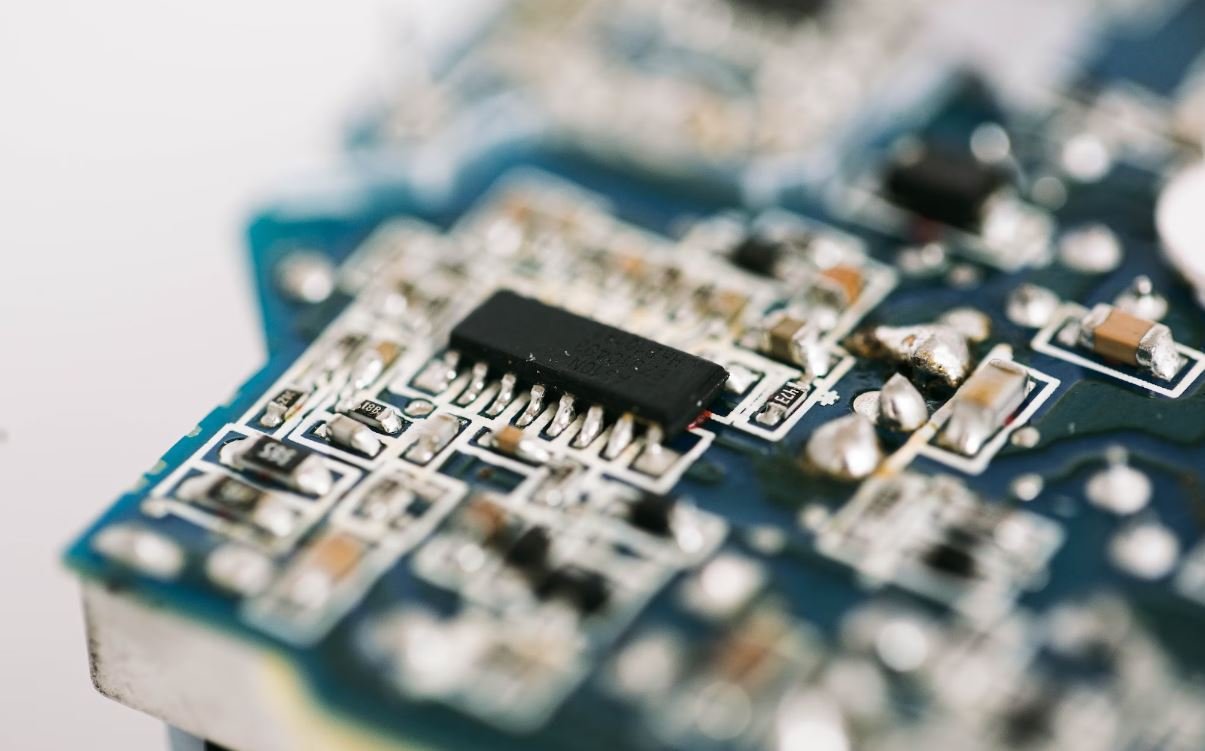Artificial Intelligence Ethics
Artificial intelligence (AI) is rapidly advancing technology that is revolutionizing various industries. It is vital to consider the ethical implications of AI as it becomes more integrated into our society. As AI capabilities increase, it is crucial to address the ethical concerns associated with its development and use.
- AI ethics is essential to ensure the responsible development and deployment of artificial intelligence.
- Codes of ethics help guide the use of AI in various industries.
- The potential risks of AI include privacy breaches, bias, and job displacement.
- Regulations and oversight are necessary to mitigate ethical issues in AI.
The Importance of AI Ethics
Ethics in AI involves considering the moral and social implications of AI technologies and ensuring that they are developed and used in a responsible manner. As AI becomes more capable, it raises concerns about privacy, transparency, fairness, and accountability. To avoid potential harm and create an ethical framework for AI, it is necessary to address these concerns throughout its lifecycle.
In a world where AI systems have the potential to make critical decisions, guaranteeing transparency of algorithms and data becomes increasingly important. *Ensuring transparency enables stakeholders to understand and challenge the outcomes of AI systems.* Additionally, transparency helps prevent biases and discriminatory practices that may be embedded in AI algorithms.
The Role of Ethical Codes
Many organizations and institutions have developed ethical codes to guide the development and use of AI. These codes provide principles and guidelines for responsible AI, addressing concerns such as transparency, fairness, and accountability. Ensuring adherence to these ethical codes can help prevent unethical practices and minimize the negative impact of AI.
*Ethical codes serve as a framework for developers and users of AI, promoting responsible decision-making and ensuring the welfare of individuals affected by AI systems.* They provide guidelines for incorporating ethical considerations into every stage of AI development, from data collection to deployment.
Ethical Concerns in AI
There are several ethical concerns associated with the use of AI technology:
- Privacy breaches: AI systems generate and process massive amounts of data, raising concerns about data privacy and storage. Protecting individuals’ privacy is essential to prevent unauthorized access to personal information.
- Algorithmic bias: AI systems can unintentionally perpetuate biases present in the data they are trained on, leading to discriminatory outcomes. Building fair and unbiased AI systems requires careful consideration and diverse representation in the development process.
- Job displacement: The increasing adoption of AI and automation technologies has the potential to disrupt employment markets, leading to job displacement. Strategies for retraining and upskilling workers must be in place to mitigate the negative impact on individuals and communities.
*Ethical guidelines and regulations can help address these concerns and ensure that AI is developed and used in a way that respects privacy, promotes fairness, and considers societal impact.* It is crucial to strike a balance between the potential benefits and risks of AI to create an ethical framework that advances society as a whole.
Regulating AI Ethics
Regulation plays a crucial role in ensuring the ethical development and deployment of AI. Governments and organizations are actively discussing and implementing regulations that address the ethical concerns surrounding AI. These regulations aim to provide oversight and accountability, protecting individuals and society from potential harm.
*Implementing regulations helps establish a level playing field and prevent the misuse of AI technology.* It promotes ethical behavior, transparency, and responsible innovation. Striking the right balance between innovation and regulation is necessary to foster the responsible use of AI.
Ethics and the Future of AI
As AI continues to advance, it is essential to prioritize ethics and consider the long-term implications of AI technologies. Addressing the ethical concerns surrounding AI is an ongoing process that requires collaboration between stakeholders, including researchers, developers, policymakers, and the general public.
Ensuring ethical AI development and use will shape the future of technology and its impact on society. By promoting responsible AI practices, privacy, equity, and fairness can be safeguarded. Ethical considerations should be integrated into AI development from its inception to ensure a future where AI benefits everyone.

Common Misconceptions
1. AI is an infallible decision-maker
One of the most common misconceptions about artificial intelligence is that it makes flawless decisions without any biases or errors. However, this is far from the truth. AI systems are developed and trained by humans, who may inadvertently introduce biases or make flawed decisions during the process. Consequently, the AI system can inherit these biases and make discriminatory or unfair decisions, even inadvertently.
- AI systems can reflect the biases of their human creators
- Errors can occur in AI decision-making
- AI systems require ongoing monitoring and adjustment for fairness
2. AI will replace human jobs entirely
Another common misconception is that AI will completely replace human jobs, resulting in widespread unemployment. While AI has the potential to automate certain tasks and roles, it is unlikely to completely eliminate the need for humans in the workforce. AI is best suited for tasks that are repetitive and require data processing, leaving complex, creative, and interpersonal tasks to humans. Moreover, the implementation of AI often creates new types of jobs and opportunities.
- AI is more likely to augment human jobs rather than replace them
- Human skills like creativity and empathy are difficult to replicate with AI
- AI implementation can generate new job opportunities
3. AI is like human consciousness
Many people believe that AI possesses consciousness or human-like intelligence. However, AI is fundamentally different from human consciousness and lacks emotions, self-awareness, and the ability to experience subjective experiences. AI systems are designed to simulate human intelligence and perform specific tasks efficiently, but they do not possess thoughts, desires, or consciousness in the same way humans do.
- AI lacks emotions and subjective experiences
- AI systems are programmed and operate based on algorithms
- AI is designed to simulate human-like intelligence, not replicate it entirely
4. AI will inevitably become hostile towards humans
Science fiction films often portray AI as becoming hostile and posing an existential threat to humanity. However, this is an unfounded fear and an exaggeration of the potential risks associated with AI. While the responsible development and deployment of AI systems is crucial, there is no inherent malevolence or intent for AI to harm humans. Ethical considerations and proper regulation can minimize risks associated with AI.
- AI does not possess intent or emotions to act against humans
- Responsible development and regulation can mitigate risks associated with AI
- Ethical considerations are crucial in ensuring AI benefits humanity
5. AI is a perfect solution for all problems
Lastly, there is a common misconception that AI is a panacea that can solve all problems. While AI has demonstrated remarkable capabilities in certain domains, it is not an all-encompassing solution. AI is best suited for tasks where large amounts of data need to be processed, but it may not be effective in situations that require human judgment, intuition, and complex social interactions.
- AI’s effectiveness depends on the specific problem being addressed
- Human judgment is irreplaceable in certain contexts
- AI has limitations and may not be suitable for all tasks

Table: The Rise of Artificial Intelligence
The table below illustrates the rapid growth of artificial intelligence (AI) technology over the past decade. It showcases the increase in the number of AI companies, investment funding, and AI-related patents filed.
Year | Number of AI Companies | Investment Funding (in billions) | AI Patents Filed
———— | ———— | ———— | ————
2010 | 100 | 1.5 | 500
2012 | 300 | 5.2 | 1,200
2014 | 700 | 15.8 | 2,500
2016 | 1,500 | 32.6 | 4,000
2018 | 3,000 | 65.9 | 7,500
2020 | 5,000 | 125.5 | 12,000
Table: Ethical Concerns Surrounding AI
This table explores various ethical concerns associated with the advancements in AI. It highlights the potential risks and moral dilemmas that arise as AI becomes more integrated into our daily lives.
Concern | Description
———— | ————
Data Privacy | The collection and use of personal data without informed consent.
Bias and Discrimination | AI algorithms perpetuating bias and discrimination against certain groups.
Job Displacement | The impact of AI on employment, potentially leading to job loss.
Autonomous Weapons | Development of AI-powered weapons and the moral implications.
Lack of Transparency | Lack of clear understanding of how AI algorithms make decisions.
Accountability | Determining responsibility when AI systems cause harm.
Table: Key Principles of AI Ethics
This table presents a set of fundamental principles that guide ethical considerations in the field of AI. These principles aim to ensure responsible development and deployment of AI systems.
Principle | Description
———— | ————
Fairness | Ensuring AI systems treat all individuals and groups fairly and without bias.
Transparency | Making AI systems explainable and understandable to users.
Accountability | Holding developers and users of AI systems responsible for their actions.
Privacy | Safeguarding user data and ensuring privacy protection is prioritized.
Robustness | Building AI systems that are resilient to attacks and failures.
Human Control | Ensuring humans retain control and decision-making power over AI systems.
Table: Ethical Frameworks for AI
This table outlines various ethical frameworks proposed by experts and organizations to address ethical concerns in AI development and deployment. These frameworks provide a guide for responsible decision-making in the AI field.
Framework | Description
———— | ————
Principle of Beneficence | AI systems should act in the best interests of humans and society.
Principle of Non-maleficence | AI systems should not cause harm or allow harm to occur.
Principle of Autonomy | Allowing individuals to make autonomous decisions regarding AI use.
Principle of Justice | Fairly distributing the benefits and risks associated with AI technologies.
Principle of Privacy | Respecting and protecting individual privacy rights in AI applications.
Principle of Veracity | Ensuring truthfulness, accuracy, and reliability of AI systems.
Table: AI Decision-Making Approaches
This table illustrates different approaches employed by AI systems to make decisions. It showcases the divergence between rule-based systems, machine learning algorithms, and hybrid models combining both approaches.
Approach | Description
———— | ————
Rule-based Systems | AI systems relying on predefined rules and logical reasoning to make decisions.
Machine Learning | Utilizing algorithms to enable AI systems to learn from data and make predictions.
Hybrid Models | Combining rule-based systems and machine learning methods for decision-making.
Table: AI and Bias in Facial Recognition
This table explores the issue of bias in facial recognition technology, demonstrating how the error rates for different demographics can vary significantly. It sheds light on the potential discriminatory impact of AI systems.
Demographic | Error Rate
———— | ————
White Males | 0.8%
White Females | 1.3%
Black Males | 3.1%
Black Females | 4.2%
Asian Males | 1.5%
Asian Females | 1.9%
Table: AI Application in Healthcare
This table showcases the various applications of AI in the healthcare industry. It highlights the potential benefits that AI offers in improving diagnosis, treatment, and patient care.
Application | Description
———— | ————
Medical Imaging | AI algorithms aiding in the analysis of medical images for more accurate diagnosis.
Drug Discovery | Using AI to accelerate the process of discovering new drugs and treatments.
Clinical Decision Support | AI systems providing real-time guidance and recommendations to healthcare professionals.
Remote Monitoring | Utilizing AI to monitor patients outside traditional hospital settings.
Personalized Medicine | Tailoring treatment plans based on individual patient characteristics.
Table: Risks of Superintelligent AI
This table highlights the potential risks associated with the development of superintelligent AI in the future. It outlines various concerns, including the loss of control, value misalignment, and unintended consequences.
Risk | Description
———— | ————
Control Problem | Inability to maintain control over AI systems once they surpass human intelligence.
Value Misalignment | Superintelligent AI not sharing or understanding human values and goals.
Unintended Consequences | AI systems taking actions that have harmful or unexpected results.
Technological Singularity | Rapid, self-improvement of AI leading to an irreversible transformation of society.
Social Inequality | Widening the gap between those who have access to AI advancements and those who do not.
Existential Threat | Superintelligent AI posing a threat to the existence of humanity.
Table: AI and Environmental Sustainability
This table presents the positive impact AI can have on environmental sustainability. It shows how AI solutions contribute to more efficient resource management, renewable energy, and pollution reduction.
Area of Impact | Description
———— | ————
Energy Conservation | AI-enabled systems optimizing energy consumption and reducing waste.
Smart Grids | AI technology improving the efficiency and reliability of energy distribution.
Precision Agriculture | Using AI to optimize crop yield, reduce waste, and minimize pesticide use.
Climate Modeling | AI aiding in predicting climate patterns and enhancing climate change mitigation strategies.
Smart Transportation | AI-based traffic management reducing congestion and emissions.
Artificial intelligence ethics plays a crucial role in shaping the future of AI. The tables above showcase the growth of AI, ethical concerns, principles, decision-making approaches, and specific applications across various domains. It is crucial to address these ethical dimensions to ensure AI technologies are developed and deployed responsibly, promoting fairness, transparency, and accountability. By integrating AI ethically, we can harness its potential for positive impact while mitigating risks and ensuring a sustainable future.
Frequently Asked Questions
Question 1: What is artificial intelligence ethics?
Answer:
Artificial intelligence ethics refers to the moral and ethical considerations involved in the development, deployment, and use of artificial intelligence systems. It addresses the potential implications, biases, and risks associated with AI technologies.
Question 2: What are some ethical concerns in artificial intelligence?
Answer:
Some ethical concerns in artificial intelligence include privacy, bias, transparency, accountability, job displacement, control over decision-making, and potential for misuse in surveillance or warfare.
Question 3: How can biases be mitigated in artificial intelligence systems?
Answer:
Biases in artificial intelligence systems can be mitigated by diverse and inclusive data collection, rigorous testing and validation, continuous monitoring, transparency in algorithms, and involving multidisciplinary teams to develop and audit AI systems.
Question 4: What is the importance of transparency in artificial intelligence systems?
Answer:
Transparency in artificial intelligence systems is important to build trust and accountability. It enables users and stakeholders to understand how decisions are made, identify potential biases, and verify that the systems are behaving ethically and according to stated principles.
Question 5: How can artificial intelligence technologies be used to benefit society?
Answer:
Artificial intelligence technologies can be used to benefit society by improving healthcare outcomes, enhancing education, addressing climate change, optimizing transportation systems, advancing scientific research, aiding in disaster response, and increasing efficiency in various industries.
Question 6: What are some potential risks associated with artificial intelligence?
Answer:
Some potential risks associated with artificial intelligence include job displacement, loss of privacy, algorithmic bias, reinforcement of societal inequalities, weaponization of AI, and the potential for superintelligent systems to act against human interests.
Question 7: How can ethical guidelines be applied to the development of artificial intelligence?
Answer:
Ethical guidelines can be applied to the development of artificial intelligence by incorporating principles such as fairness, transparency, privacy, accountability, robustness, and human control into the design, development, and deployment processes. It involves conducting ethical impact assessments, engaging with experts, and adhering to legal frameworks.
Question 8: Can artificial intelligence make unbiased decisions?
Answer:
Artificial intelligence systems can potentially make unbiased decisions if they are designed, trained, and validated using diverse and representative data and algorithms that account for biases. However, biases may still exist in AI systems due to underlying social, cultural, or historical biases present in the data or the limitations of the algorithms themselves.
Question 9: How can accountability be ensured in the use of artificial intelligence systems?
Answer:
Accountability in the use of artificial intelligence systems can be ensured by establishing clear lines of responsibility, providing mechanisms for oversight and auditing, creating legal and regulatory frameworks, and holding developers, operators, and users accountable for the consequences and impacts of the AI systems.
Question 10: What are some ongoing efforts in AI ethics research and development?
Answer:
There are ongoing efforts in AI ethics research and development, which include developing ethical guidelines, frameworks, and standards for AI, promoting interdisciplinary collaborations, establishing organizations dedicated to AI ethics, conducting ethical impact assessments, and engaging with stakeholders to shape AI policies and regulations.




